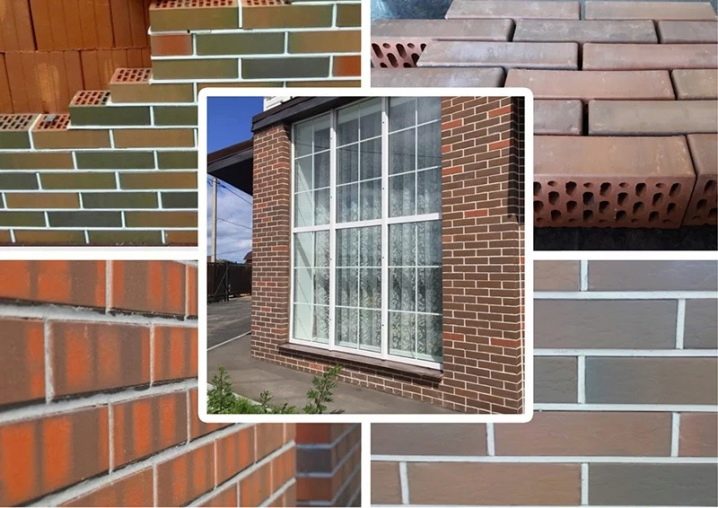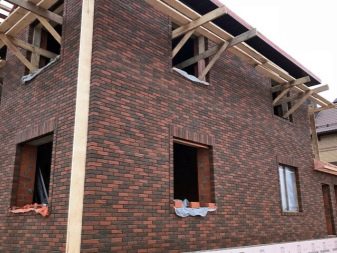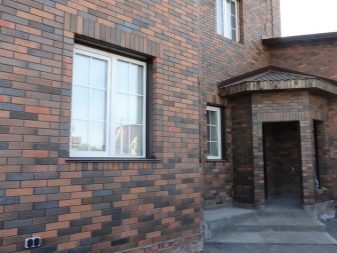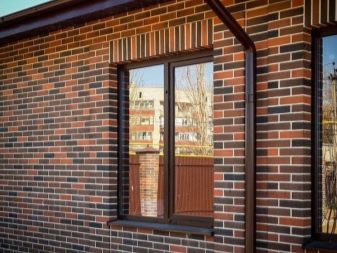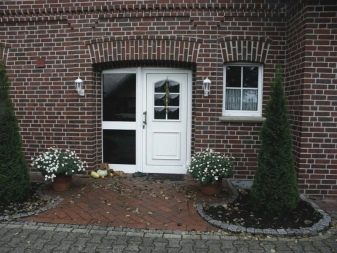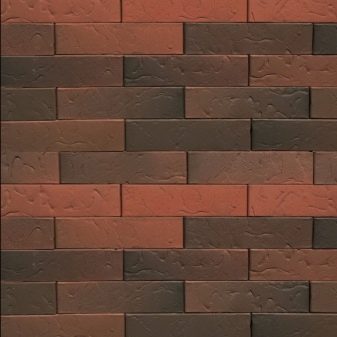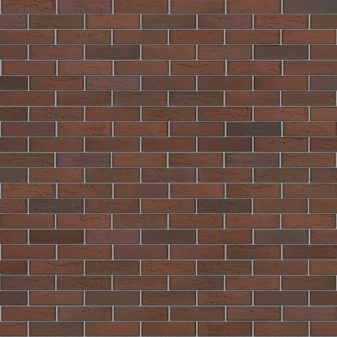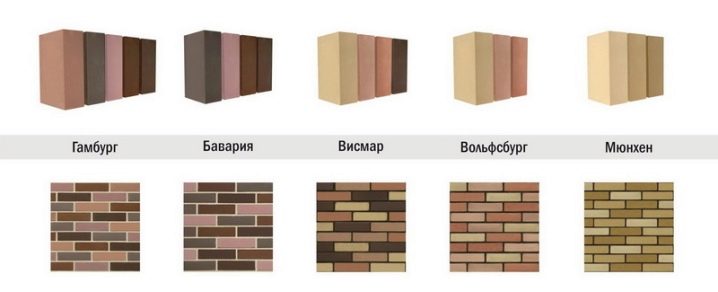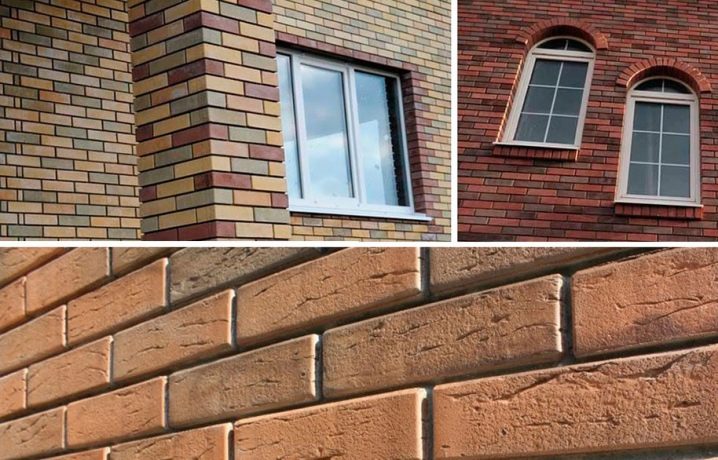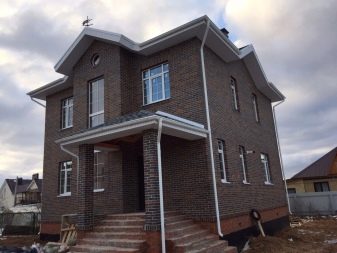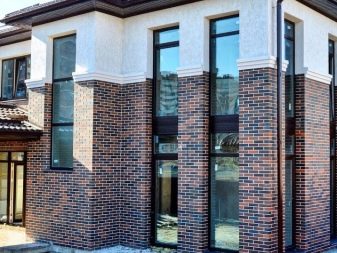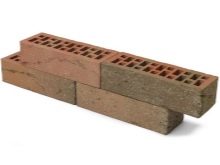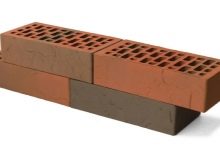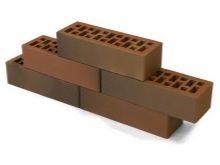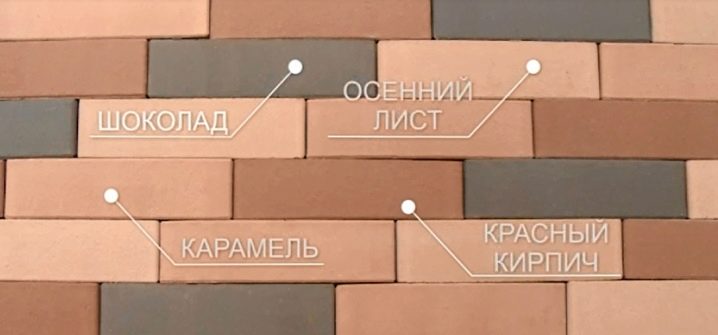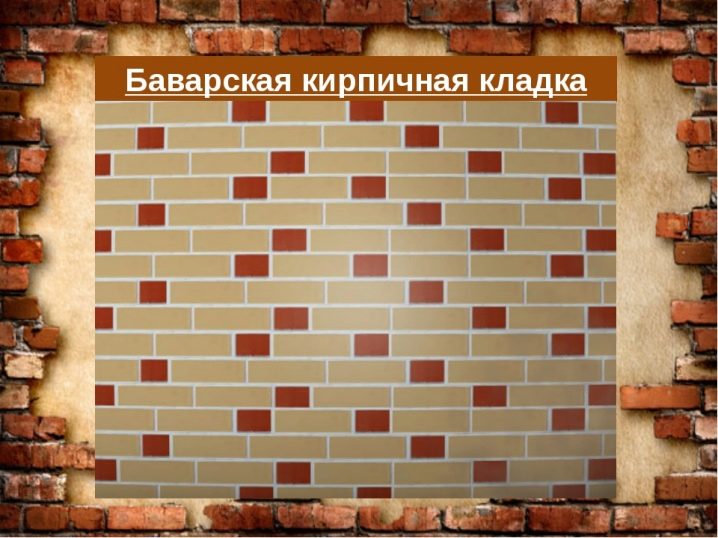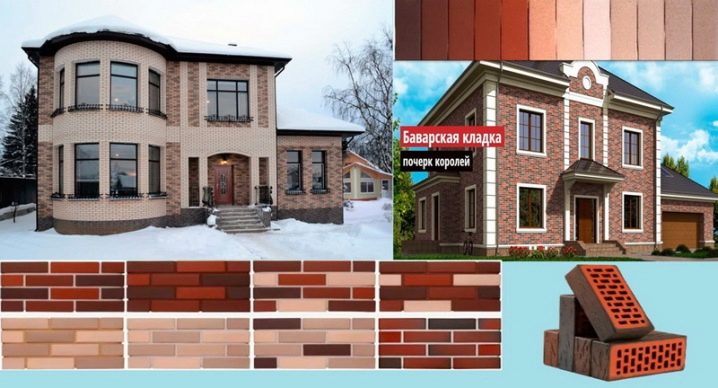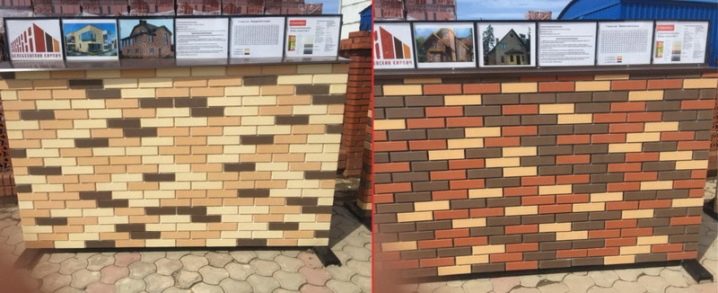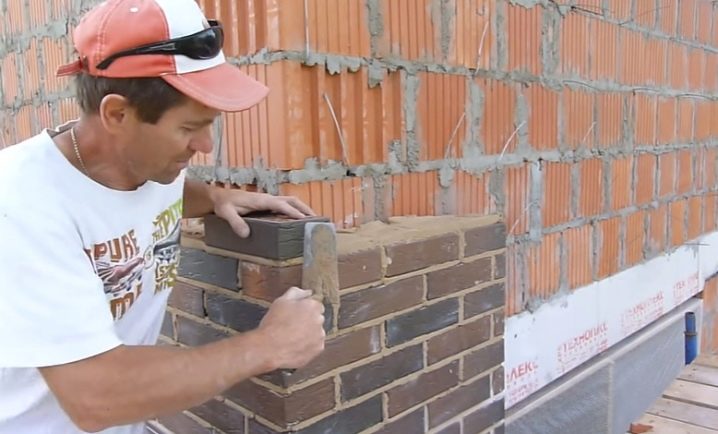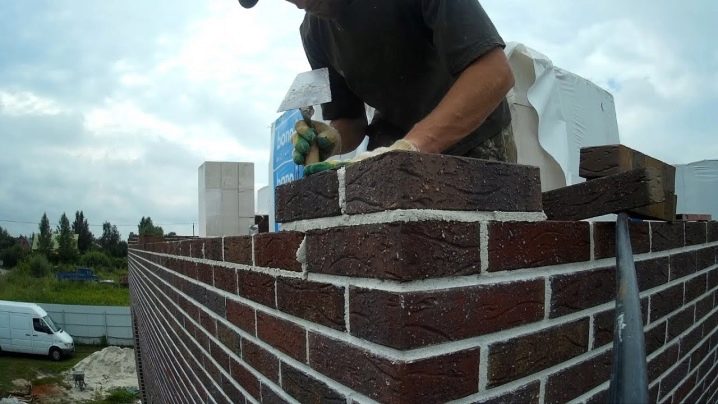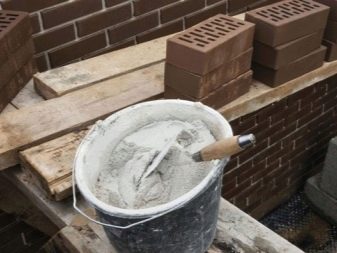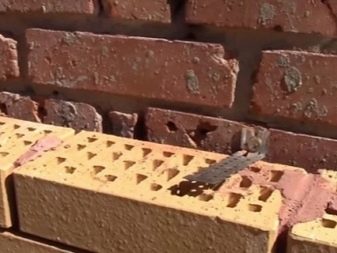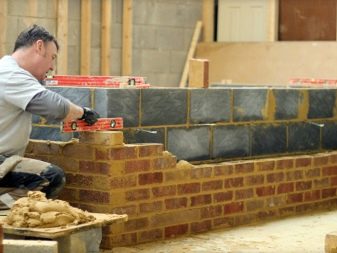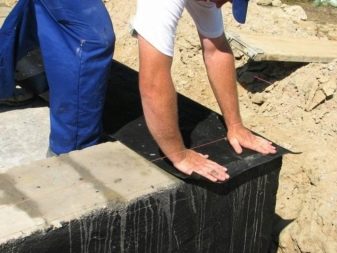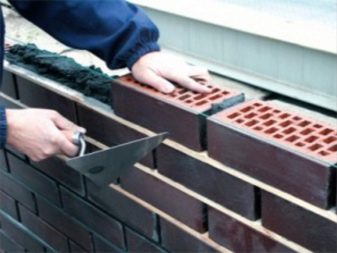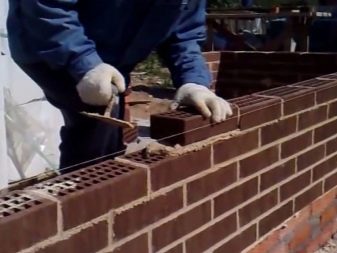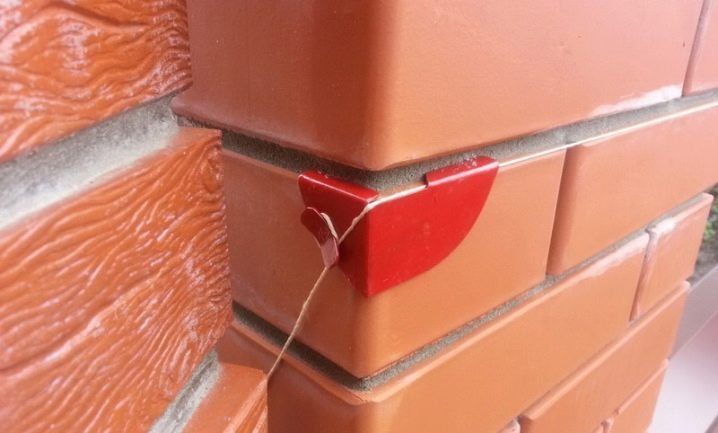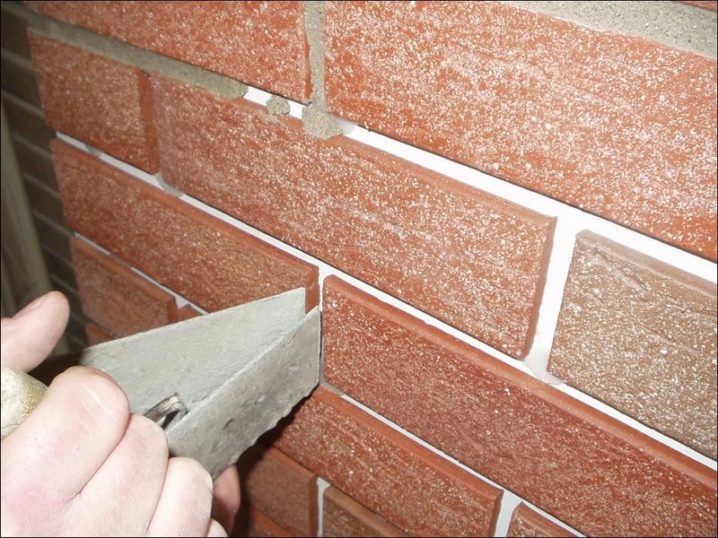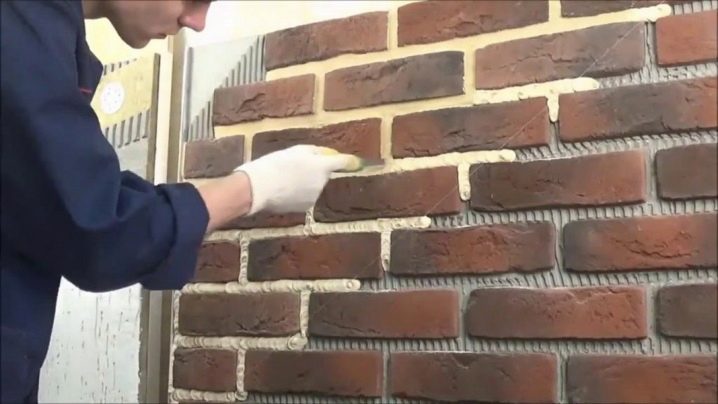Bavarian brickwork: features and recommendations for implementation

There are several options for laying bricks. One of the most attractive is considered to be a special Bavarian laying. It has its own characteristics that are important to consider when it is self-executing. Today we will examine in detail what this method of laying is and how to work with it correctly.
What it is?
Before embarking on the independent construction of aesthetic Bavarian masonry, it is necessary to analyze in detail what it is. Bavarian masonry is a type of brickwork that combines blocks of different types.Elements usually have a different color, most often sustained in red and brown shades. The result is a very original and attractive composition that attracts a lot of attention.
Most sources are replete with information that a similar version of brickwork originates in Germany of the XVII century. In fact, these finishing materials are relatively new. Significant distribution, they could get just a couple of decades ago. An obvious question arises from the above information: where does Bavaria appear in the name of the brickwork? This designation is considered to be more trading, as, for example, a block house or a hamburger. The connection with the mentioned region in Germany is due rather to the fact that it is there that it is possible to see in large quantities old brick houses without plastering.
Character traits
Aesthetic and fashionable Bavarian clutch is recognizable and in demand. If you are planning to turn to this bright combination of multi-colored bricks, then you should find out what characteristics are inherent in it.
- In a specified stack, adjacent blocks usually have different colors.
- In the design, none of the colors should be accentuated against the others. Do not forget about this important rule, since if it is not observed, the clutch will be disharmonious.
- Drawing of such a clutch should not be constantly repeated.
- Vertical seams must be aligned across the row.
It should be noted that the traditional type of Bavarian masonry involves a combination of red and brown bricks (one of their shades). Tones can be no more than nine. Basically, masters resort to using eight suitable tones.
Laying methods
Before proceeding independently to the Bavarian laying, you need to make the right scheme. It is desirable to draw in detail. In this scheme, you will need to reflect all the colors that you plan to stick with when laying the bricks. Please note that there are a lot of options for Bavarian laying.
However, you will definitely need to follow some important rules. It is permissible to start up from 5 to 10 separate fragments. The combination that most liked, should be implemented in accordance with all the technical features. In order for the Bavarian brickwork to look complete and aesthetic, you need to ensure that the rows alternate through the seams located vertically.
Modern versions of patterns are extremely rarely made of bricks of different colors in a light tone. Mostly people prefer dark variants. Solid and beautiful structures that demonstrate the delicate taste of their owners are obtained from such materials.
Also here you can apply not only to the multi-colored, but monotonous laying. For example, one color can be made out of the corners of the house or door / window openings. Often in facing different buildings masters resort to spectacular laying in the shape of a Christmas tree. Of course, the bricklayer must be well acquainted with such a technique in order to get the expected result.
It looks interesting tandem Bavarian and two-tone brick masonry. With this layout, the corners and openings are usually made lighter, and the walls themselves are laid out with red bricks or decorated with Bavarian masonry. In this case, it is customary to use approximate gammas.
How to choose a material?
If you plan to veneer the facade of the house with Bavarian brick, then you should know that purchasing a batch of bricks at a nearby factory will most likely not help you. For a similar finish make multi-colored blocks.Different manufacturers of colors may vary. When choosing construction materials for such grounds, you should look not only at their color, but also at other important criteria.
- Quality bricks. In no case should there be chips, deep scratches and other similar defects on the blocks. Damaged materials will not last long, so it is important to look for high-quality products without damage.
- Color uniformity. It doesn't matter if you buy light brick or dark. And those and other materials should have a uniform color, without pale or dark eye spots.
- Manufacturer. Purchase only good bricks from bona fide manufacturers. The most popular today are the plant in Stary Oskol, LSR factories and the Golitsyn keramozavod.
If we consider the specific parameters that a brick should have (for example, reduced) in the Bavarian laying, then they are as follows:
- strength grade - not lower than M150;
- frost resistance level - not lower than F50;
- moisture absorption - from 8 to 10%.
Training
If you have secured all the necessary tools and building materials, then you can proceed to the beginning of installation works. The first step will be preparation. Consider what is meant by such events.
- Selection of the picture. There are many shades of Bavarian brick, but it is desirable not to place more than four on one wall basis. The more flowers there are, the harder it will be to lay. For the facade to be original and attractive, 3-4 shades will suffice. You can try to combine different colors with the involvement of specialized programs, but experts do not recommend it, because you will spend time in vain. None of the masons adheres to the ideally exact location of each individual unit.
This Bavarian laying and characterized. It does not have a certain alternation of bricks - there are no clear ornaments here. At the preparatory stage, decide on the main tone and a couple of additional ones. Do not forget that the main shade should take at least 50%. Others are allowed to buy in free proportions.
If you are not able to independently choose the main and secondary tones for the Bavarian brickwork, then you can turn to more experienced designers in these matters, or consider a number of ready-made options.
- To lay the bricks as fast as possible,You can roughly lay out blocks of different shades right on the scaffolding. There is no need for accurate calculations. If you need it, then each color is possible to make later.
- Bavarian masonry should be constructed exclusively for jointing, so it is important to pre-purchase the required tools and accessories.
- If desired, you can purchase a special color composition. It costs more than simple formulations, but it makes more interesting and beautiful brick laying out of it.
Bavarian masonry is permissible to use as a cladding layer of the facade of the building, and as an outer row of brick wall foundations. In the course of a separate lining it is allowed to put foam plates in motion in order to further insulate the walls. However, not all experts advise to apply to such solutions, because then there will be no special sense from the insulation, because it will be freely located between the supporting wall and the lining, and this will lead to heat losses.
If you want to achieve a good heat effect, tightly lay the insulation between the base and lining. Fill the remaining spaces with foam.
Step-by-step instruction
After competent preparation, you can proceed to the construction of Bavarian brick masonry. Consider in stages how the blocks need to be properly placed.
- First you need to check whether all the front walls are horizontal. For this you need a plumb. Check the position of the walls over their entire height; set marks on the foundation with a preliminary arrangement of the facing materials. Keep in mind that the most modest gap between the main wall and the finish should not be less than the thickness of the warming layer. If the last you will not be laid, the indentation may be quite small. All the slits then need to pour a solution.
- Next, mark the location of the starting row of blocks. Note that all the blocks in the cladding must be intact, without damage. Lay out 1 row of bavarian bricks. Start from one corner and gradually move to what is on the opposite side. There must be a gap of at least 8-10 mm between them.
- In order to keep track of the size of the seam, you should buy a special device in the store or make it yourself from the square profile.
- If at the end of the layout there is no whole brick, then you will need to make the gaps a little wider. For 1 time, make the gap between adjacent brick blocks no more than 2-3 mm.If this nuance is not adhered to, then the discrepancy will be evident. After about 20-25 bricks can be removed within 10 cm size. As a rule, this is sufficient in most situations. If you correct the gap is too problematic, then you can simply cut off a portion of the brick, and then apply it on a less visible area.
- Remove any litter from the wall. Pre-build scaffolding. One cannot do without them if the height of the base to be trimmed reaches 1.5-1.6 m. Foresters are usually made by the craftsmen themselves from wood. You can buy already assembled or rented metal structures. Everything here comes from the wishes of the home master.
- Now prepare the mortar. It should consist of 1 part of the cement component and four parts of sand. Liquid is added as needed. Make the solution slightly thicker than for laying a simple red brick.
- Next, put on the foundation of the waterproofing layer - sheets of roofing material. Laying do, starting with 2 corners, located on opposite sides. Line them up to about 4-5 lanes. Always follow the position of the corner bases with a level or plumb.
- Each of the corners should be based on a width of 4-5 bricks. In the course of further work, this value will be reduced by half of the brick block. While you are working on the corners, do not remove the installation row. It will still be removed in the course of further laying.
- Now stretch the construction cord or rope between the lined corners. Be sure to check her perfect horizontal position. Set the threads to control the masonry level.
- Then you can proceed directly to the laying of one brick. Take these parts from the previously laid out installation row and lay it directly on the masonry compound. Adjust the width of the joints using bars of square-shaped metal.
- The solution turned out to be on the front, you will need to immediately remove with a damp cloth. Move the bar along the rows as they increase. Remember that the color of each next brick is better to choose in accordance with the previously drawn up plan / scheme, if you chose this method. In this case, the blocks do not need to count. Enough to adhere to the approximate color ratio.
- During the laying of bricks do not forget that the main color should account for about 50% of the entire masonry. You can alternate different colors if you wish. To make a mistake in this matter is not scary.
- Next, after 4-5 rows, proceed to grouting. This is done with a small device made of plastic, wood or metal. If in the process of grouting you notice gaps in the composition, then it should be added and smoothed again. Always clean the surface of dirt, otherwise on the Bavarian bricks can remain noticeable stains from the solution, to get rid of that will be difficult.
- Carefully lay out the bricks on the site openings. At the same time, it is often necessary to cut blocks in length. Cut materials do not need to be put on the corner of the opening. Put it earlier on several blocks.
- To finish the brick came out more reliable and sturdy, it is required to "tie" to the bearing wall basis. To do this, you need to stock up on special reinforcement of a periodic profile, a metal mesh or a galvanized strip with perforation.
- If the bricks will go across the entire facing surface, lay the brickwork further along the old pattern until the work is completed.Of course, if you want to organize the specified laying only on certain parts of the building, then you will need to act according to a predetermined and detailed sketch.
Act carefully and take your time. Always check the evenness of the structures. To do this, you can use a bubble or laser level. If you doubt your skills or are afraid to make serious mistakes, it is better to turn to the services of experienced masons. Then the result will not disappoint you.
To learn how to make a Bavarian brick correctly, see the next video.

